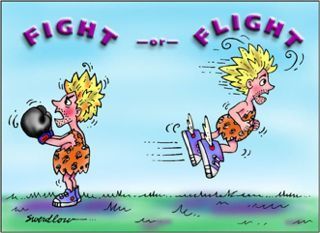Fight, Flight, or Freeze. What to Do When You Are Threatened
February 19, 2019
He was surrounded. Outnumbered. For Frank Williams, this was supposed to be a fun day with his cousins. He imagined himself playing basketball and having fun with them. Maybe he would even go skate-boarding. Instead, there was a group of kids surrounding him and his cousins after he would not give the group his skateboard. He had to make a split second decision: Fight, or fight. “At that second, I decided we got to fight back. We just got to.” Frank threw the first punch. Even after getting knocked out, he got up, stayed, and continued to fight.
When faced with a dangerous situation, our bodies go into acute stress response, better known as fight or flight. Fight or flight is our bodies way of protecting us in threatening circumstances. The fight response is when a person immediately wants to fight the threat. They stay and prepare for the danger. With the flight response, a person will want to get away from the danger immediately by running to safety. Both of these are effective in the right situation. Frank Williams had experienced the fight response in this case. His response was effective in his situation. However, not everyone is so lucky to experience one of the two responses.
There is actually a third, more common response to a threat that most people do not account for. It is known as the “freeze” response. The person in danger can not move or scream or process what is going on in front of them. They are locked in place. Lots of a people experience this response and do not realize. Jillian Brown, a freshman at South Broward High school, describes how when she is in a situation with plenty of eyes on her, she will not move at sight of so many eyes. This is a sign that in a dangerous situation, she could experience the freeze response. “It is scary to think that our natural responses that kick in, like fight or flight, may not kick in when in a dangerous situation. Freezing up will do no one any good in dangerous situations.”
It is clear that the freeze response is not beneficial and in no way helps the person in danger. If Frank were to just freeze up, he could have been beaten up badly, or worse. This response has to be corrected in people who have it. Although it is impossible to know or control your response, since it is instinctive, there are ways to “practice.”
It is extremely difficult to simulate a dangerous situation. Instead of trying to simulate a threatening situation, it is better to try and practice when the person feels unsafe. For example. During horror movies when a person feels the urge to scream or run, they should do that instead of try and stay silent and watch the horror movie. Although it seems unimportant, the the decision made could be the difference between having a fatal response or a life-saving response when making a split decision.



